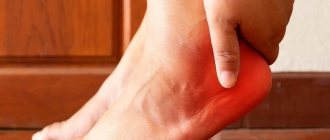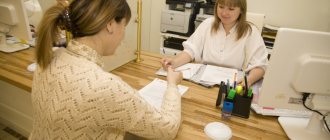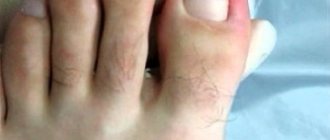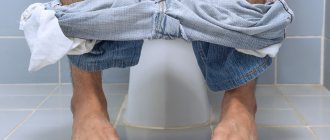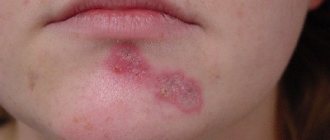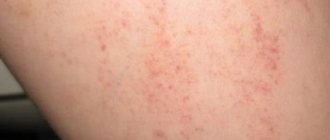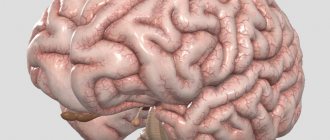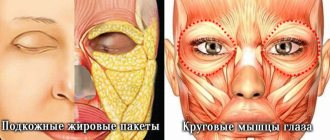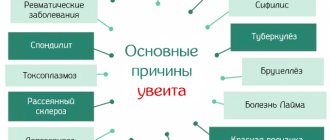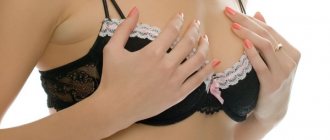Heel spur is a disease characterized by inflammation of the plantar fascia, resulting in the accumulation of osteophytes in the area of the heel tubercle. According to statistics, recently there has been an increase in the diagnosis of heel spurs among the population. Most often, women over 40 years of age are affected by the disease. This is due to prolonged wearing of uncomfortable high-heeled shoes. In addition, there are a number of predisposing factors, the presence of which increases the risk of developing a heel spur. To diagnose the pathology, it is necessary to perform an x-ray of the foot. As a rule, heel spurs are a unilateral disease. To treat growths in the heel area, a set of measures is used, including conservative therapy and surgical intervention.
The Moscow Yusupov Hospital has been diagnosing and treating heel spurs for many years. The latest equipment and experienced staff make it possible to identify the disease in the shortest possible time and begin timely effective treatment.
Causes of heel spurs
The cause of heel spur formation is inflammation of the plantar fascia due to increased load on it or due to its insufficiency. The development of the inflammatory-degenerative process in the tissues of the aponeurosis is promoted by:
- flat feet with longitudinal deformation of the foot;
- sedentary lifestyle;
- excess body weight;
- long-term static loads on the feet (standing, walking in high heels, using uncomfortable shoes);
- sudden loads on the foot after a long period of rest;
- microtraumas during intense sports training.
Symptoms of heel spurs
The main manifestation of pathology is pain. In the first stages of the disease, it occurs while walking. As the severity of the pathology develops and worsens, the pain becomes stronger and more acute. Particularly characteristic of plantar fasciitis is the “starting” pain that occurs when movement begins after a long break or sleep.
During examination of the foot, no obvious clinical signs are usually observed; in some cases, slight swelling in the heel area is noted. Palpation reveals pain in the lateral areas of the heel bone and in the middle of the heel from the side of the sole.
The intensity of pain and the severity of symptoms of pathology may vary and do not depend on the size of the bone formation. Thus, even a small growth in the area of the heel tubercle can cause acute burning pain and cause complete disability for the patient, while the formation of a large osteophyte in another patient may manifest only minor discomfort while walking.
Today, there are many known ways to treat heel spurs - both clinical and folk. In this article we will look at both in detail. The first part of the article is devoted to home treatment methods for heel spurs - we will not judge their effectiveness, but will only give a brief overview of the methods of their use.
However, let us remind you that any attempts at self-treatment without consulting a competent doctor are fraught with the development of even more serious complications and can only lead to a deterioration in the patient’s well-being. It is necessary to understand that the use of home treatment methods instead of full-fledged medical therapy will only slow down the patient’s recovery and lead to the progression of the disease.
What do spurs look like on feet?
A spur on the sole of the foot modifies a person's gait. It is a natural desire to relieve pain. Spurs on the legs (photo 3) lead to prolonged overload of the forefoot. Because of this, not only flat feet occur, but also varicose veins on the legs, further aggravating the situation.
Spurs on the legs, formed on both limbs at once, sharply limit movement. I have to use crutches. Inflamed plantar fasciitis (photo in the gallery), undergoing degenerative changes, causes pain. Toe spurs reduce stride. Climbing stairs becomes a chore.
The most common type of spur on the leg is wedge-shaped. Sometimes mild heel swelling is observed. The spur on the legs does not cause any other visual pathological changes. The location of the pain depends on the damaged tendon. Sometimes the fascia becomes infected with bacteria, causing necrotizing fasciitis. The initial stage of the disease resembles spurs.
It is not uncommon for a spur to form on the big toe. Outwardly, it looks like a callus. A spur on your toe can turn every step into agony.
Orthopedic insoles for heel spurs
One of the most effective means used to treat and prevent the formation of heel spurs are orthopedic insoles. Their use is necessary to unload the foot and improve shock absorption of the musculoskeletal system when walking. Individual orthopedic insoles, made to order by an orthopedic specialist, most effectively eliminate pain and relieve stress on the feet during movement. In this case, the anatomical shape of the patient’s foot is taken into account, which allows you to accurately select and adjust the shape of the insoles. Wearing orthopedic insoles provides maximum comfort for the patient, both while walking and in a static position.
The medical department manufactures and selects individual Formthotics orthopedic insoles. To do this, an orthopedic doctor using a special device - a plantoscope - examines the condition of the tissues of the feet, identifying possible deformations of their longitudinal and transverse arches.
After a thorough plantoscopic diagnosis, the doctor makes individual insoles that most accurately follow the anatomical lines of the patient’s feet and create ideal conditions for the functioning of their musculoskeletal system. The insoles are heated with a hairdryer to make the material plastic, the patient stands on them and the doctor records the exact imprint of the feet in a static position and while walking.
Continuous wearing of Formthotics custom insoles stops the progression of plantar fasciitis, stimulates the restoration of foot tissues and promotes their healing, accelerating the patient's recovery.
Heel pads
One of the types of orthopedic insoles are heel pads. These are orthopedic products, which are shock-absorbing inserts under the heel. They are made from various natural or synthetic materials (leather, balsa, gel, silicone) to reduce the impact load on the foot and reduce pain in the heel during movement.
Patch for the treatment of heel spurs
Among the home remedies for heel spurs, special pharmaceutical plasters are quite common. In particular, pepper patch is used for severe pain for applications on the heel area for several days.
What effect does the adhesive plaster have in this case?
The active components with which it is impregnated (pepper, belladonna extract) have a local irritating effect, increasing blood circulation and lymph flow in the tissues of the heel area. This reduces local swelling and inflammation, and also reduces the intensity of pain.
No less popular is the Chinese patch for the treatment of heel spurs. Its therapeutic effect is to stimulate the reflexogenic zones of the heel area along with an anti-inflammatory effect on the tissue.
Carrying out surgery
If conservative treatment methods are ineffective, the spur on the heel is removed surgically. This technique involves complete removal of the growth. However, it is worth remembering that even crushing the heel spur does not guarantee that the growth will not form again. That is why, when conducting diagnostics, it is very important to determine the provoking factors that lead to the formation of spurs.
According to experts, surgery to remove heel spurs is tolerated very well by patients, and complications are very rare. Before the operation begins, an anesthetic is injected with a thick needle to ensure that the surgery is painless.
Surgery to remove heel spurs can be performed using x-rays. Local irradiation with them helps eliminate the inflammatory process, promotes faster healing of injured tissue, and also has an analgesic effect. In addition, surgery involves excision of the spur by making incisions in the skin.
Ointment for the treatment of heel spurs
To treat heel spurs at home, various anti-inflammatory ointments and creams are often used. Among them, indomethacin and hydrocortisone ointments are most often used.
When treating the heel area, indomethacin ointment has an analgesic effect on the tissue and eliminates local inflammation. Hydrocortisone ointment, which has a hormonal effect, reduces local swelling and the intensity of the inflammatory process. For home treatment of heel spurs, anti-inflammatory pain-relieving ointments ibuprofen, diclofenac and voltaren are also used.
However, it should be remembered that all of the listed medications do not eliminate the causes of heel spurs, but only smooth out the symptoms of the disease. In addition, their long-term and uncontrolled use in the absence of proper etiotropic treatment can lead to the development of side effects and aggravation of the severity of the disease.
Carrying out diagnostics
Before removing a spur on the heel, you need to undergo a comprehensive diagnosis. It is not difficult for a specialist, but it is necessary to determine the cause of the disease, study the symptoms, find out the location, duration and stage of the disease.
Then the doctor conducts a clinical examination of the sore heel using palpation. This is quite enough, especially in more advanced stages, when the growth is clearly visible and easily palpable.
In the initial stages of the disease, diagnosis can be quite difficult. Therefore, additional diagnostics may be required. In this case, an x-ray examination is prescribed. This will also eliminate serious injuries to the heel bone, fractures and cracks. The presence of a rheumatic spur, in which an inflammatory process occurs, can be determined using a biochemical blood test.
Comprehensive, competent diagnostics using modern techniques allows us to identify the disease in its initial stages. This will allow you to choose the best method for removing heel spurs, which will bring positive results.
Exercises for heel spurs
One widely used home treatment for heel spurs is foot exercises. The main goal of the exercises is to stretch the plantar fascia and strengthen the muscles of the longitudinal arch of the foot, which helps to increase the elasticity of the tissues and strengthen them.
The most effective exercises are rolling with the foot of a tennis ball, picking up small objects from the floor with the toes, etc. Exercises should be done after mandatory preliminary warm-up and warming up of the muscles.
Rotation of the feet has a beneficial effect on joint mobility, the condition of the muscles and ligaments of the legs. These exercises are performed while sitting on a chair: with your legs stretched forward, you rotate your feet in and out for 15 seconds, making sure that your thumbs are pointing upward.
Thanks to therapeutic exercises, blood supply to the plantar aponeurosis and foot muscles is improved, local metabolic processes are activated, tissue nutrition is improved, which helps accelerate their healing and reduces the risk of microtrauma.
Therapeutic exercises, massage, diet
Techniques such as massage and special therapeutic exercises contribute to faster recovery and elimination of tumors. The effect of such therapeutic measures is aimed at stretching and increasing the elasticity of connective tissues, which helps normalize blood circulation in the lower extremities.
Regardless of the chosen method of therapy, using specially selected gymnastics and massage, you can significantly shorten the treatment period, as well as consolidate the positive result. To better remove salts from the body and reduce the inflammatory process, patients are advised to exclude salty foods, tea, sweets, smoked foods, and coffee from their diet. In this case, you must pay attention to a sufficient amount of fluid consumed.
Physical therapy can bring the most positive results in eliminating the growth. The easiest exercise is to roll a glass bottle with your feet.
Massage spikes also provide good results, but you should not overuse them. The best option is to use them 2 times a day for 15 minutes after performing a set of exercises. Such techniques must be used in combination with taking medications and compresses.
Massage for heel spurs
Massage is widely used to treat heel spurs at home. The purpose of massage for plantar fasciitis is to relieve muscle spasm, increase microcirculation in the affected area, activate local metabolism, reduce pain and improve tissue trophism. The massage technique combines stroking, rubbing, kneading tissue in the heel area and the entire sole, pinching and pressing.
The therapeutic effect of massage in this case can only be obtained when it is combined with other therapeutic methods (physiotherapy, drug treatment, etc.).
Foot massage
In combination with other methods, this method shows high efficiency in practice. Currently, several of its varieties are known:
You need to take a few kilograms of coarse salt, heat it and pour it onto a flat surface. After this, you should walk on it barefoot for 15-20 minutes. After undergoing several such procedures, the pain will be significantly reduced.
If you have small potatoes at home, you need to boil them together with the peel and pour them into a large bowl. Then you need to start stirring it with your bare feet until the potatoes cool down. The therapeutic effect will increase significantly if you salt the potatoes generously during the cooking process.
If you have an old Soviet board designed for washing clothes, then you can also use it to massage sore feet. To do this, put it on the floor and start rubbing your feet for 10 minutes.
Treatment of heel spurs with folk remedies
There are many ways to treat heel spurs using traditional medicine.
Bile
Medical bile, which can be purchased at a pharmacy, has long been used for therapeutic compresses for heel spurs. When applied to tissue in the area of the pathological focus, the drug has a warming, analgesic effect and accelerates the resolution of the inflammatory process.
Dimexide
Dimexide is a fairly popular remedy for home treatment of heel spurs. A bandage is moistened with the drug solution and applied as compresses to the affected area. By acting locally on tissue, dimexide reduces pain and the intensity of inflammation, stimulates tissue metabolism, accelerates the resorption of infiltrates and tissue regeneration.
Iodine
Iodine solution is also used for topical treatment of plantar fasciitis. Applications of iodine solution have a local warming and antiseptic effect on tissue, accelerate local blood flow, improve tissue nutrition, gradually eliminating inflammation.
Vinegar
To get rid of heel spurs in folk medicine, a mixture of vinegar, butter and a chicken egg is used. The thoroughly mixed mixture is applied in the form of compresses to the heel area in order to activate local blood circulation and metabolism, reduce pain and accelerate the resorption of bone growth.
Salt
Salt compresses and baths are also considered one of the most effective home remedies for heel spurs. Salt applications have an analgesic, anti-inflammatory and absorbable effect on tissue.
Honey
Compresses of honey and salt applied at night gradually relieve heel pain, improve metabolism and tissue nutrition, accelerate the resorption of painful infiltrates and relieve acute inflammation.
Orthopedic devices
To reduce the intensity of the inflammatory process, pain and faster tissue healing, the use of orthopedic devices is prescribed. At night, it is recommended to wear orthoses that ensure the correct position of the foot. Immobilization of the leg helps tissue heal without shortening the limb or causing microtrauma.
During the day, the affected limb should be unloaded by limiting movements. When walking, it is recommended to use crutches and a cane, which will help reduce pressure on the tissue.
In some cases, taping is performed to securely fix the structures of the musculoskeletal system. This is achieved by applying an adhesive plaster or adhesive tape. Taping is prescribed to support the arch of the foot and reduce the damaging effects on surrounding tissues.
Clinical treatments
No matter how effective traditional medicine may seem, limiting yourself to their use is absolutely unreasonable and unacceptable. A full medical examination and the prescription of adequate therapy are absolutely necessary, because plantar fasciitis is a serious disease.
Which doctor should you contact?
If you experience symptoms of a heel spur, you should consult an orthopedic doctor or surgeon. After examination and carrying out the necessary diagnostic tests, the doctor prescribes a treatment regimen, selects suitable orthoses, and, if necessary, gives a referral to see specialists of another profile (physiotherapist, massage therapist, exercise therapy instructor, etc.).
What are the most commonly used clinical treatments for heel spurs?
X-ray therapy
Radiation therapy is used when conservative treatment is ineffective and pain is persistent. Local exposure to x-rays on tissue in the area of bone growth produces a prolonged analgesic effect. Treatment is carried out in several sessions, the duration of one procedure is about 10 minutes. Contraindications to X-ray therapy are pregnancy and breastfeeding.
Blockades
Drug blockades are carried out in cases where conservative therapy for plantar fasciitis does not bring the desired result. Injections of drugs into the area of the pathological focus have an analgesic effect and eliminate inflammation in the tissues.
Injections
For intense pain in the heel area, injections with hormonal drugs of steroid origin (hydrocortisone, diprospan, kenalog) have a good effect. Injections of these drugs into the osteophyte area quickly relieve pain and relieve inflammation.
Medicines
Conservative treatment of heel spurs is carried out in combination with drug therapy. The group of medications used in this case includes:
- analgesic drugs;
- non-steroidal anti-inflammatory drugs (ibuprofen, diclofenac);
- hormonal drugs of steroid origin (hydrocortisone);
- local anti-inflammatory drugs (dimexide, etc.).
Phytotherapeutic techniques
To get the most positive result when removing a spur on the heel, treatment must be comprehensive. Physiotherapeutic methods of therapy have proven themselves well. Shock wave therapy is often used. This method of removing spurs on the heel involves the use of special ultrasound pulses. Due to this, calcium deposits, which form the basis of the growth, gradually begin to lose their strength, become loosened and washed out of the body. In addition, this technique helps:
- accelerate the tissue healing process;
- reduce inflammatory processes;
- reduce the level of tissue swelling.
Each such procedure leads to a decrease in pain, and by the end of treatment there should be no pain at all. However, in order to get the best possible result and completely get rid of heel spurs, treatment should be carried out at the very beginning of the onset of the disease. If the pathological process is severely advanced, then such a technique will only help prevent subsequent deposition of calcium salts.
In addition, it is worth noting that this method has certain contraindications, among which we should highlight:
- low pressure;
- disorders of the cardiovascular system;
- malignant tumors;
- nervous system disorders;
- infectious processes occurring in acute form;
- pregnancy.
Treatment with radiation therapy has proven itself well. This method involves exposing the affected area to x-ray radiation. The nerve endings are blocked, as a result of which the patient ceases to feel severe pain, and over time it is completely eliminated. To completely get rid of pain, you will need a course of 10 sessions. The main advantages of using this technique include:
- high performance;
- complete painlessness;
- no contraindications;
- irradiation of only a certain area of the legs;
- providing an anti-inflammatory effect.
A photo will help evaluate the result after removing a spur on the heel, as a noticeable improvement and elimination of the painful growth are clearly visible. After completing a course of physical therapy, it is important to take care of reducing the load on the injured area.
Treatment of heel spurs at the ALFA TECHNOLOGIES clinic
Medical treatment of heel spurs is performed using conservative methods, including physiotherapy, pharmacotherapy, massage and drug blockades. The most pronounced therapeutic effect in this disease is provided by shock wave therapy - a unique treatment technique based on the effect of low-frequency acoustic shock waves on tissue.
Penetrating into the affected area to a clearly defined depth, wave vibrations cause a whole range of positive changes in the tissues:
- Blood circulation and lymph circulation improves.
- Local metabolism becomes more intense.
- The structural elements of bone formation become loose and dissolve.
- Spasmed muscles relax.
- The local inflammatory reaction is eliminated.
- The pain gradually decreases, and by the end of the therapeutic course it disappears completely.
- The processes of tissue repair and restoration are activated.
Complete treatment of heel spurs using the shock wave method involves completing a course of 5-8 procedures. The effectiveness of this treatment is very high: at the end of the course, complete disappearance of painful symptoms and recovery occurs in 97% of patients.
Treatment of plantar fasciitis with the shock wave method has a number of advantages over other methods:
- Absolute safety and harmlessness (virtually no contraindications);
- Pain and signs of local inflammation disappear after the first procedure;
- Treatment does not require the use of medications or pain relief;
- Exposure to acoustic waves improves the absorption of drugs into affected tissues and increases the effectiveness of pharmacotherapy.
Shock wave therapy is an advanced technique that guarantees rapid healing for heel spurs. Come to us - we will help you restore the health of your feet. Discover a world of ease of movement - it will take care of you!
Application of traditional methods
Removing heel spurs at home can also be done using traditional methods, which, if used correctly, can be quite effective. Alternative medicine recipes are based on the use of natural ingredients that have no serious contraindications and practically do not provoke side effects.
When removing spurs on the heel using folk remedies, you must strictly follow the rules for using all medications, and also consult a doctor first. Incorrect treatment can only harm your health. Traditional methods are most effective at the initial stage of the disease and in preventing the occurrence of the pathological process.
For treatment, you can use compresses prepared from black radish, which are applied to the affected foot. To prepare such a compress, the root vegetable must be thoroughly washed and chopped. The pulp must be squeezed out of excess liquid and applied to the heel, secured on top with a plastic bag. It is advisable to leave such a compress overnight, and in the morning, wash the foot with warm water and soap and lubricate it with a nourishing cream. The course of treatment is 7-10 procedures, and can be repeated if necessary.
Orris root is a good remedy for heel spurs. To do this, you need to grind it, add alcohol, and leave in a cool place for 15 days. The resulting tincture is used as compresses, which must be alternated with Vaseline bandages. The course of therapy is 20 days, alternately with each component.
The most popular method for removing heel spurs at home is the use of iodine. To do this, pour 3 liters of hot water into a container, add 2 tbsp. l. tincture of iodine and mix. In the prepared solution, you need to steam the sore foot for 15 minutes, and then dry the foot thoroughly, apply an iodine mesh to the heel and put on a warm sock. The procedure is best done before bed to ensure better results. This method is not suitable for patients with sensitive skin, iodine intolerance and varicose veins.
